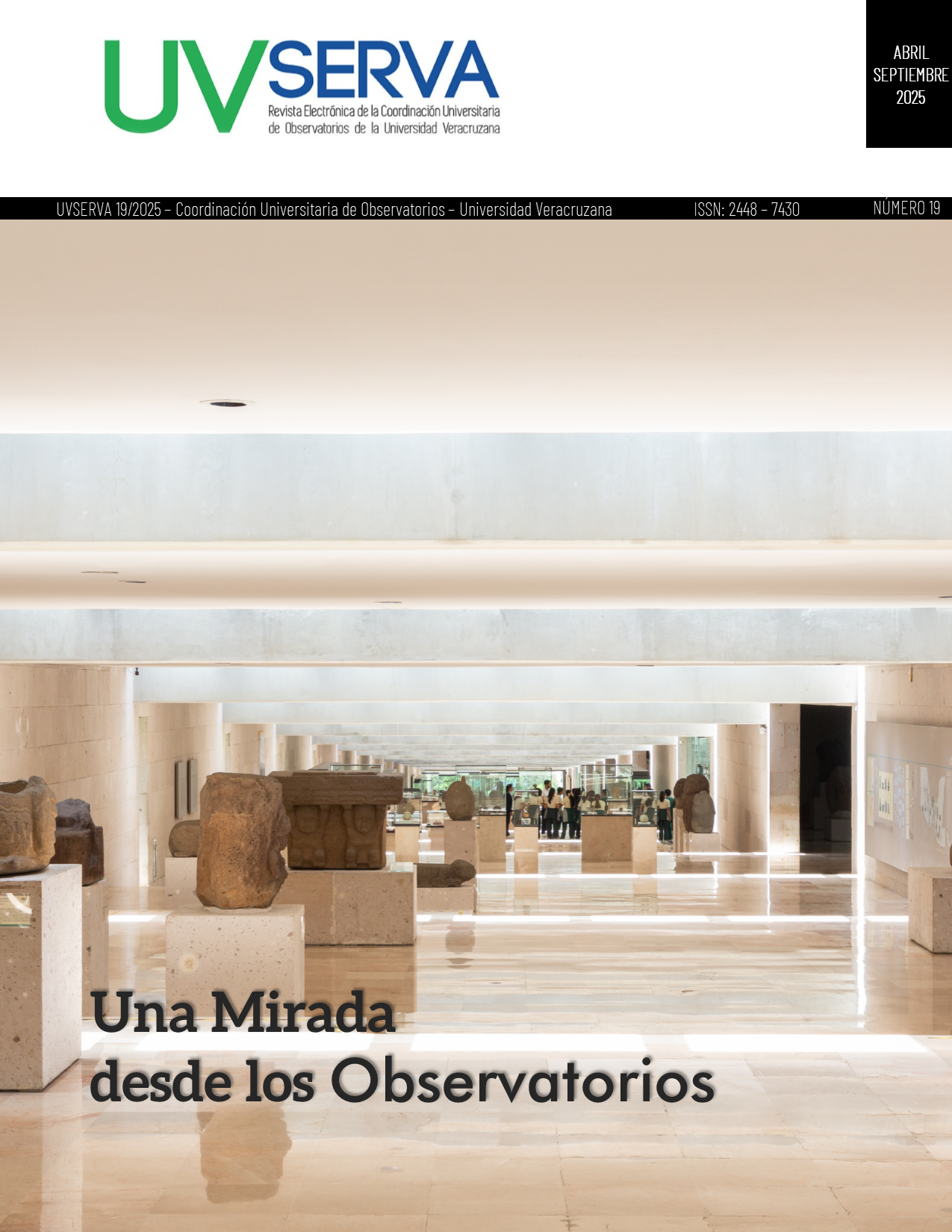Abstract
The monitoring of sectorial plans from 2020 to 2024, related to Intangible Cultural Heritage, at federal and state level in Mexico and Veracruz, as well as the Municipal Development Plans 2022-2025 of 33 municipalities in the capital region of Veracruz, is presented in order to identify the commitments and intentions assumed by these administrations regarding intangible cultural heritage. The methodology proposed by the Office of the United Nations High Commissioner is used to relate the commitment and intention to promote cultural rights in the plans with the proposed strategies. Using qualitative structural indicators, the objectives and type of dimension of value of Intangible Cultural Heritage were monitored, as well as the types of legal mechanisms that guarantee cultural governance. The results show that, at the federal and state levels, the dimensions of social value, economic value, and the value of promoting the identities and interculturality of the Intangible Cultural Heritage stand out. At the level of the 33 municipalities, it is evident that the economic value dimension is more prevalent in the development plans than the environmental/ecological dimension. It is concluded that, in the municipalities, the commitment to the transversality of the dimensions of heritage value is apparently greater than in the state and federal sectoral plans, perhaps due to the heterogeneity of the administrative structure. On the other hand, cultural governance mechanisms are scarce, only three municipalities contemplate them in their cultural norms, therefore, the impact of citizenship on cultural policies remains a political will at the local level.
References
Becerra-Zavala, M. D. L., Lozada-Andrade, Z. E. y Andrade Sosa, P. G. (2023). Análisis de legislación mexicana sobre derecho al acceso y participación de patrimonios. UVserva, (16), 77–87. https://doi.org/10.25009/uvs.vi16.2976
Ben-Andrés, L. (2023). I Encuentro inter observatorios y redes españolas y latinoamericanas de política y gestión culturales. Periférica Internacional. Revista Para El análisis De La Cultura Y El Territorio, (23), 42–53. https://doi.org/10.25267/Periferica.2022.i23.08
Carrasco-Arroyo, S. (2022). Una tarea inacabada. Medir la cultura. Periférica Internacional. Revista para el Análisis de la Cultura y el Territorio, 1(7), 140–168. https://doi.org/10.25267/Periferica.2006.i7.09
Castellanos-Ribot, A. (2018). Los indicadores UNESCO de Cultura para el Desarrollo como una herramienta para valorar y promover el respeto de los derechos culturales. En Oficina de la UNESCO en México y Comisión Nacional de los Derechos Humanos (México) (eds). Derechos culturales y derechos humanos (pp. 85-89). UNESCO Office México, y CNDH. https://tinyurl.com/mmkfv8er
Coll-Serrano, V., Carrasco-Arroyo, S., Blasco-Blasco, O., y Vila-Lladosa, L. (2012). Sistema de indicadores culturales local (Siclo). Profesional de la información, 21(1), 113–117. https://doi.org/10.3145/epi.2012.ene.15
Coll-Serrano, V., Vila-Lladosa, L., Blasco-Blasco, O., y Carrasco-Arroyo, S. (2014). El barómetro cultural local (báculo): una herramienta para el seguimiento y la evaluación de las políticas culturales locales. Sociedade E Cultura, 16(1). https://doi.org/10.5216/sec.v16i1.28217
Comité de Naciones Unidas sobre Derechos Económicos, Sociales y Culturales. (2010). Observación General no. 21, Derecho de toda persona a participar en la vida cultural (artículo 15, párr. 1a del Pacto Internacional de Derechos Económicos, Sociales y Culturas [i.e. Culturales]). https://tinyurl.com/3c8v2s4n
Flores-Déleon, E. (2021). El derecho internacional de los derechos culturales. Figuras. Revista Académica de Investigación, 2(1), 69-77. https://doi.org/10.22201/fesa.figuras.2020.2.1.132
Instituto de Estadística de la UNESCO. (2014). Cómo medir la participación cultural. UIS. https://unesdoc.unesco.org/ark:/48223/pf0000226337.locale=es
Maass, M., Amozurrutia, J. A., Almaguer, P., González, L., y Meza, M. (2012). Cibercultur@ y sociocibernética: Perspectivas que se complementan. En Sociocibernética, cibercultur@ y sociedad (pp. 23-58). UNAM, Centro de Investigaciones Interdisciplinarias en Ciencias y Humanidades.
Oficina del Alto Comisionado de las Naciones Unidas (2018). Preguntas frecuentes sobre los Derechos Económicos, Sociales y Culturales. Organización de las Naciones Unidas. https://tinyurl.com/2ppnxddd
Oficina del Alto Comisionado de las Naciones Unidas. (2012). Indicadores de derechos humanos. Guía para la medición y la aplicación. Organización de las Naciones Unidas. https://tinyurl.com/3k26uaee
Planas-Lladó, A., y Soler-Masó, P. (2012). Sistema de indicadores para políticas municipales culturales: una herramienta de evaluación. Empiria. Revista De metodología De Ciencias Sociales, (24), 117–140. https://doi.org/10.5944/empiria.24.2012.845
Salazar-Elena, R. (2020). Introducción. En R. Salazar-Elena (coord.). Política y políticas públicas (pp. 15-21). FLACSO.
Secretaría de Educación Pública [SEP]. (2003). Decreto por el que se establece el Sistema de Formación y Capacitación del Profesorado [PDF]. https://tinyurl.com/2v7rka6k
Secretaría de Gobernación [SEGOB] (21 de enero de 2025). Plataforma del Sistema Nacional de Evaluación de los Derechos Humanos (SNEDH). SEGOB. https://snedh.segob.gob.mx/index.php
UNESCO (2020). Indicadores cultura 2030. UNESCO. https://tinyurl.com/n3x3wyve
UNESCO (2022). Textos fundamentales de la Convención para la Salvaguardia del PCI de 2003. UNESCO. https://tinyurl.com/2weusn9k
UNESCO. (2014). Indicadores UNESCO de cultura para el desarrollo: manual metodológico. UNESCO. https://tinyurl.com/mutb4j9

This work is licensed under a Creative Commons Attribution-NonCommercial 4.0 International License.
Copyright (c) 2025 María De Lourdes Becerra Zavala, María Guadalupe Jiménez Conde, Jesús Diego Moncayo Hernández, Cassandra Palacios Valencia


